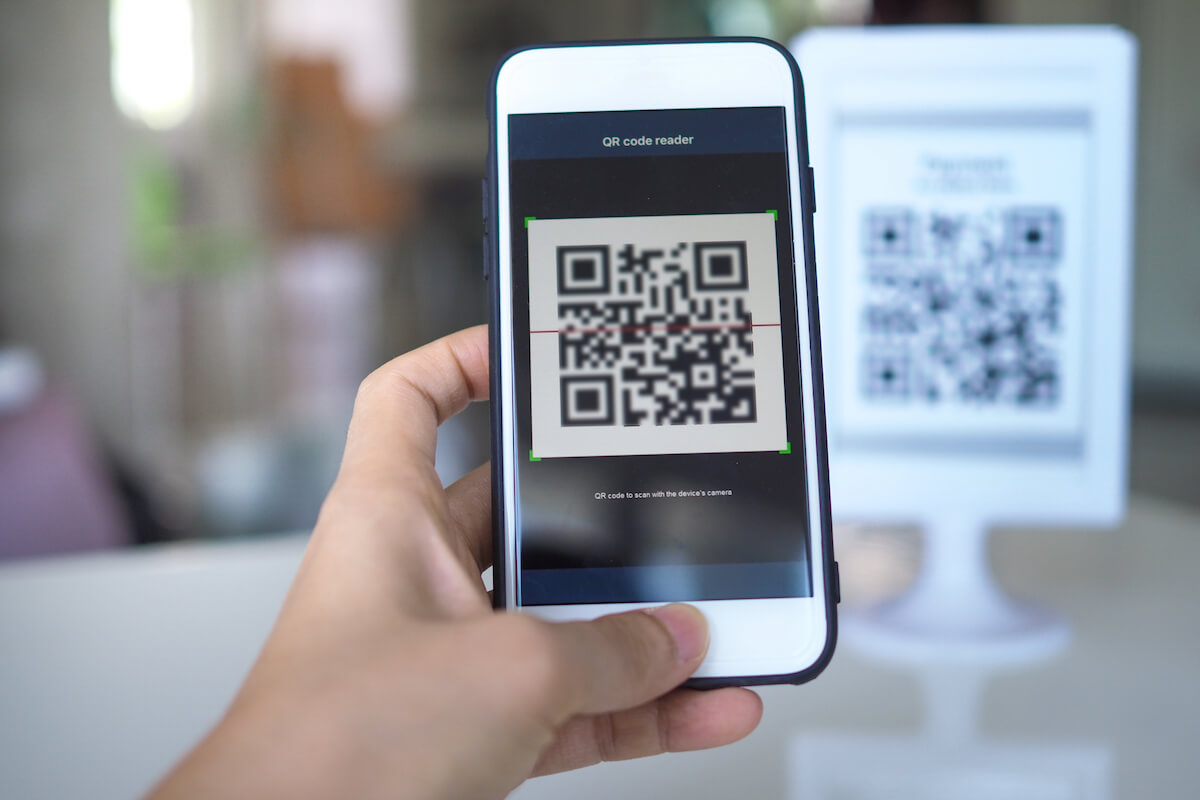Get Creative: Adding QR Codes to Your Digital Marketing
April 5, 2022

Initially developed in 1994 for use in the Japanese auto industry, QR codes rapidly became popular across many industries. However, while QR codes were appearing on products in North America for a while in the mid-late 2010s, they lost their popularity — until recently.
If you’re looking for a simple, creative way to promote your business, QR codes are an easy element to add to your digital marketing. Since the pandemic began, QR code use in the U.S. has increased by 11%, making QR codes a fast-growing opportunity to reach your audience and deliver a memorable experience.
Due to the increase of sanitation, cleaning, and touchless interactions regarding COVID-19, it’s clear why QR codes are becoming the preferred method for distributing information and data.
A QR code is a simple and affordable tool that can decrease the spread of germs and add innovation to a marketing campaign. For example, more and more restaurants are using QR codes so guests can browse the menu on their smartphones instead of handling a physical menu.
A creative QR code design is easy and quick to generate using an advanced and custom code generator online that will give you the freedom to customize it. In addition, Forbes shares, “simplicity makes them an excellent tool to encourage conversions. Out-of-home marketing materials [banners, bench ads, flyers, etc.] can include QR codes to direct consumers to your website, redeem a discount, and subscribe to your marketing communications.”
QR codes also add a layer of trackability to these out-of-home marketing materials that they may have lacked in the past. For example, it’s hard to track how many people visit your website after seeing a banner at an event — unless your website is linked via a QR code. This allows you to track how many scans your codes received and which location has the best results.
Best Practices For QR Code Marketing
As with any marketing trend or practice, you want to be strategic with your efforts. To ensure you are using QR codes effectively, here are some best practice tips to follow:
- Put yourself in your customers’ shoes when considering placement and size. Ensure that your code is big enough for phones to scan, that it’s easily accessible, and that you don’t have too much information crowded together.
- While people accept and see the value of QR codes, that doesn’t mean your entire audience understands them. Therefore, we recommend retaining physical copies of things like menus or brochures, so those who don’t want to use the QR code can still get the information they are seeking.
- Include a clear call to action. Since QR codes are still not universal, tell people how to interact with them and what the code offers. For example, “Use your smartphone to scan and visit our website today!”
- Many QR code generators allow for customization of the shapes appearing in the code and the ability to upload your logo. Take advantage of this, but consider how too much customization may hinder your target customer’s ability to immediately recognize it as a QR code.
- Instead of using the traditional black and white QR codes, a visual-looking QR code can catch your scanners’ attention, which results in 80 percent more scans and leads to generation! (Of course, see below for our suggestions regarding QR code colors.)
Markentum’s Suggestions for QR Code Design
Do Not Over-Customize Your QR Code
Customization adds to your branding but overdoing it makes the QR code undetectable by QR code readers.
Making simple customizations with your QR code like blending the right colors adding unique edges, frames, image is enough to make them eye-catchy without looking scattered and too all over the place.
Do Not Invert Your QR Code Colors
This is one thing you should never do. In generating your QR code, one rule of thumb is that always make sure that the pattern color is always darker than the background color (not the other way around).
Steer away from blending or mixing similar light or dark colors; otherwise, your QR code will be hard to scan.

Make Sure to Print Your QR Code Sharp, Not Blurry
As with any imagery, a high-quality image QR code creates a better user experience and is faster to scan than a QR code image with a low-quality image.
If you want to learn more about QR codes or how to use them in your marketing efforts successfully, we invite you to contact our team at Markentum today.